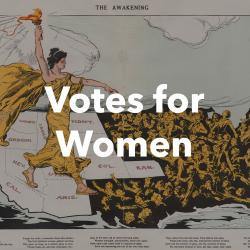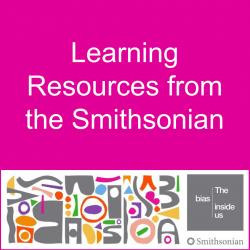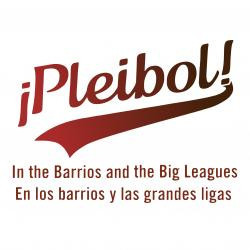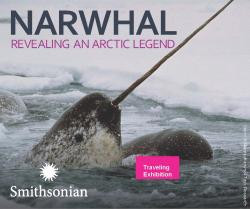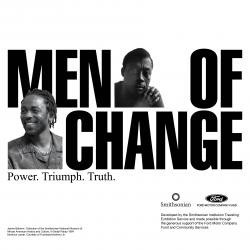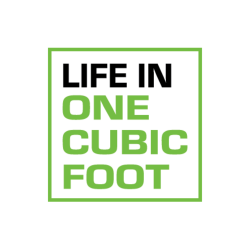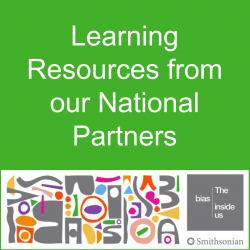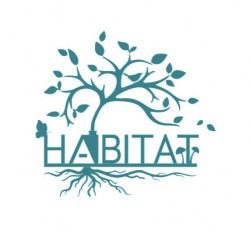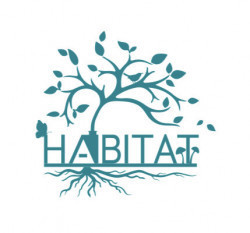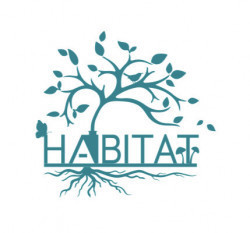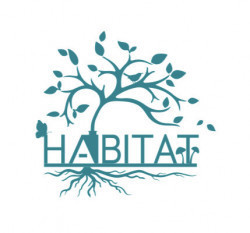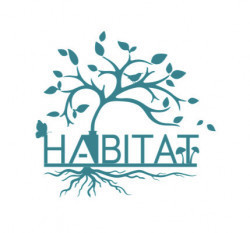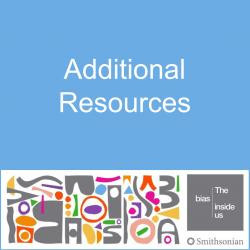Smithsonian Institution Traveling Exhibition Service
The Smithsonian Institution Traveling Exhibition Service (SITES) has been sharing the wealth of Smithsonian collections and research programs with millions of people outside Washington, D.C., for more than 65 years. SITES connects Americans to their shared cultural heritage through a wide range of exhibitions about art, science and history. For more information, including exhibition descriptions and tour schedules, visit sites.si.edu.
Smithsonian Institution Traveling Exhibition Service's collections
Votes for Women: A Portrait of Persistence - Poster Exhibition
<p>Join the Smithsonian in celebrating the 100th anniversary of the Nineteenth Amendment with SITES' new poster exhibition <em>Votes for Women: A Portrait of Persistence</em>. This free, dynamic poster exhibition explores the complexity of the women's suffrage movement and the relevance of this history to Americans' lives today. Request a FREE digital copy of the poster exhibition <a href="https://www.sites.si.edu/s/topic/0TO1Q000000cZgKWAU/votes-for-women-a-portrait-of-persistence">HERE.</a> <em>Votes for Women</em> includes ten engaging, full-color posters as well as a Poster Handbook and User Guide with display guidance and promotional and educational resources.</p>
<p></p>
<p>Take a closer look at the portraits and objects within <em>Votes for Women: A Portrait of Persistence </em>within this Learning Lab created by Educator <a href="https://learninglab.si.edu/profile/Nicole">Nicole Vance</a> for the National Portrait Gallery. <em>Votes for Women</em> outlines the more than 80-year movement for women to obtain the right to vote as part of the larger struggle for equality that continued through the 1965 Civil Rights Act and arguably lingers today. This Learning Module highlights figures such as Lucy Stone and Alice Paul, but also sheds light on the racial struggles of the suffrage movement and how African American women, often excluded by white women from the main suffrage organizations, organized for citizenship rights (including the right to vote).</p>
<p></p>
<p>#NPGteach</p>
<p>#BecauseOfHerStory</p>
 Smithsonian Institution Traveling Exhibition Service
Smithsonian Institution Traveling Exhibition Service
47
The Negro Motorist Green Book
<p>In 1936, Victor Hugo Green, a Harlem postman, began publishing a guide for African American travelers modeled after a similar publication for Jewish travelers. The <em>Green Book</em>, as it was known, was an instant success providing black travelers of the era with information on hotels, restaurants, service stations, and other facilities where they would be welcomed. In the era of Jim Crow and "sundown towns," this knowledge was not just helpful--it could be lifesaving.<br><br>The <em>Green Book</em> ceased publication in 1967, and the guidebook that for years had offered "travel without embarrassment" was lost to history. Few today remember its critical role in expanding horizons for African Americans.<br><br>The Smithsonian Institution brings this story to life with the exhibition, <em>The Negro Motorist Green Book</em>. This collection serves as a companion to the exhibit and features an immersive look at the harsh reality of travel for blacks in mid-century America and the vibrant parallel world of African American-friendly businesses that supported this travel. <br></p>
 Smithsonian Institution Traveling Exhibition Service
Smithsonian Institution Traveling Exhibition Service
72
The Bias Inside Us Book Lists
<p>A collection of book lists that educators can reference as they diversify their learning resources.</p>
<p>Part of SITES' community engagement project <em>The Bias Inside Us</em> featuring a traveling exhibition, the centerpiece for local programs and activities that raise awareness about the science and history of bias and what people can do about it. The project is grounded in research and teaches us that bias is inside everyone. It is part of being human.</p>
 Smithsonian Institution Traveling Exhibition Service
Smithsonian Institution Traveling Exhibition Service
7
¡Pleibol! In the Barrios and the Big Leagues/ ¡Pleibol! En los barrios y las grandes ligas
<p>Baseball has been a social and cultural force within Latino and Latin American communities across the United States for over a century. It is more than simply a game; Latinas/os have celebrated their communities, made a living, and challenged prejudice through baseball. Some used their talents to boost diplomacy around the world. Some offered humor and style from their home countries. Some symbolized the American dream, making it big and giving back to their communities in the United States and abroad. Those who seized the opportunities afforded by this global game have changed American baseball and culture more broadly. </p>
<p><strong><em>¡</em></strong><strong><em>Pleibol</em></strong><strong><em>! In the Barrios and the Big Leagues </em></strong>takes audiences on a journey into the heart of American baseball to understand how generations of Latinas/os have helped make the game what it is today. Their inspirational stories gesture to larger themes in American history that connect us all, on and off the diamond. </p>
<p>This project has been years in the making, from collecting objects and histories to the opening of this bilingual exhibition in 2021. </p>
<p>The following educational resources are thinking routines from Project Zero. All thinking routines can be used by any grade level with the appropriate scaffolding. The thinking routines and images can be combined as you see fit. </p>
<p>As you go through this learning lab, make sure to click on the notebook and pin icons to view in English and Spanish as well as learn more from some highlighted information. </p>
<p><em>¡Pleibol! In the Barrios and the Big Leagues / En los barrios y las grandes ligas</em><br>Organized by the Smithsonian Institution Traveling Exhibition Service in collaboration with the National Museum of American History<br>This exhibition received generous support from the Cordoba Corporation and Linda Alvarado, and federal support from the Latino Initiatives Pool, administered by the Smithsonian Latino Center.<br>#Pleibol<br></p>
<p></p>
<p>------------------------------------------------------------------------------------------------------</p>
<p>El béisbol ha sido una fuerza social y cultural en las comunidades de todo Estados Unidos desde el siglo XX. Es más que un mero juego: a través de él, los latinos y latinas han celebrado a sus comunidades, se han ganado la vida y han desafiado prejuicios. Algunos han empleado su talento para fomentar la diplomacia en el mundo. Otros han difundido el humor y el estilo de sus países natales. Otros, simbolizando del “sueño americano”, han retribuido a la sociedad dentro y fuera de EE.UU. Aquellos que aprovecharon las oportunidades que ofrece este juego universal han cambiado no solo el béisbol, sino la cultura del país.</p>
<p><strong><em>¡Pleibol!</em></strong><strong> <em>En los barrios y las grandes ligas</em></strong> es un viaje al corazón del béisbol estadounidense para conocer a las generaciones de latinos/as que han contribuido a hacer del juego lo que es hoy. Sus vivencias inspiradoras remiten a temas de la historia del país que nos unen a todos, dentro y fuera del diamante.</p>
<p>Este proyecto ha tomado años desde que comenzamos a reunir objetos e historias hasta la apertura de esta exposición bilingüe en 2021. </p>
<p>Los siguientes recursos educativos son rutinas de pensamiento de Project Zero. Todas las rutinas pueden ser usadas por cualquier nivel de grado. Las rutinas de pensamiento y las imágenes pueden ser combinadas de cualquier manera. </p>
<p>Haz clic en los iconos del cuaderno y del alfiler para ver en inglés y en español, así como para aprender más de alguna información resaltada. </p>
<p>¡Pleibol! In the Barrios and the Big Leagues / En los barrios y las grandes ligas<br>Organizada por el Servicio de Exposiciones Itinerantes de la Institución Smithsonian en colaboración con el Museo Nacional de Historia Americana<br>Esta exposición recibió el generoso apoyo de la Cordoba Corporation y Linda Alvarado y apoyo federal del Fondo de Iniciativas Latinas, administrado por el Centro Latino Smithsonian.<br>#Pleibol<br><br><br></p>
 Smithsonian Institution Traveling Exhibition Service
Smithsonian Institution Traveling Exhibition Service
55
Narwhal: Revealing an Arctic Legend
<p>These resources were developed for use with the Smithsonian's exhibition <em>Narwhal; Revealing an Arctic Legend.</em> For more information about this traveling exhibition, please visit the <a href="https://www.sites.si.edu/s/topic/0TO1Q000000U3hCWAS/narwhal-revealing-an-arctic-legend" target="_blank">Smithsonian Institution Traveling Exhibition Service (SITES)</a>.</p>
 Smithsonian Institution Traveling Exhibition Service
Smithsonian Institution Traveling Exhibition Service
50
Men of Change: Power. Triumph. Truth.
<p>In SITES' traveling exhibition <strong><em>Men of Change: Power. Triumph. Truth., </em></strong>African American changemakers are highlighted to illustrate their outstanding legacy and contributions. These individuals are icons often rendered invisible by a country, yet uplifted by a major culture. The following images showcase the legacy of men and women featured in the exhibition, illuminating their greatest works, interactions with the community, and so forth. Every individual, whether featured in the exhibit or Learning Lab, affirms the power of the African American journey and, ultimately, the American experience. </p>
<p>As you navigate throughout this Learning Lab, take notice of the various sections the Men of Change are divided into; such as Storytellers, Myth-breakers, Fathering, Community, Imagining, Catalysts and Loving.</p>
<p>#NHD2020</p>
<p>#BreakingBarriers</p>
 Smithsonian Institution Traveling Exhibition Service
Smithsonian Institution Traveling Exhibition Service
70
Habitats and Humans
<p>Habitats provide homes for all living things from the tiniest ant to the tallest tree! Use this Smithsonian Learning Lab Collection to explore the stories and science of habitats, and the plants, animals and humans that call them home. Healthy habitats fulfill four basic needs: shelter, water, food and air.</p>
<p>The exhibition <em>Habitat</em> is developed by Smithsonian Gardens and made available by the Smithsonian Institution Traveling Exhibition Service.</p>
<p>To explore what a habitat is with your young learner, click here: <a href="https://learninglab.si.edu/collections/habitat/T2nEsecDVo9wSiQz#r/">https://learninglab.si.edu/col...</a></p>
<p>For more information about healthy habitats and food, click here: <a href="https://learninglab.si.edu/collections/habitat-healthy-habitats-need-food/WJ68txwZdcCyBT1E#r/">https://learninglab.si.edu/col...</a></p>
<p>To learn more about healthy habitats and water, click here: <a href="https://learninglab.si.edu/collections/habitat-healthy-habitats-need-water/lkhcMjsvU8xRIJNS#r/">https://learninglab.si.edu/col...</a></p>
<p>To explore healthy habitats and shelter, click here: <a href="https://learninglab.si.edu/collections/habitat-healthy-habitats-need-shelter/6vaPnL97HAyrw8Fh#r/">https://learninglab.si.edu/col...</a></p>
<p>For more information on habitats and clean air, click here <a href="https://learninglab.si.edu/collections/habitat-healthy-habitats-need-clean-air/Bcvny5wfTa0mPKLU#r/">https://learninglab.si.edu/col...</a></p>
 Smithsonian Institution Traveling Exhibition Service
Smithsonian Institution Traveling Exhibition Service
11
Habitat: Healthy Habitats Need Water
<p>Habitats provide homes for all living things from the tiniest ant to the tallest tree! Use this Smithsonian Learning Lab Collection to explore the stories and science of habitats, and the plants, animals and humans that call them home. Healthy habitats fulfill four basic needs: shelter, water, food and air.</p>
<p>The exhibition <em>Habitat</em> is developed by Smithsonian Gardens and made available by the Smithsonian Institution Traveling Exhibition Service.</p>
<p>To explore what a habitat is with your young learner, click here: <a href="https://learninglab.si.edu/collections/habitat/T2nEsecDVo9wSiQz#r/">https://learninglab.si.edu/col...</a></p>
<p>For more information about healthy habitats and food, click here: <a href="https://learninglab.si.edu/collections/habitat-healthy-habitats-need-food/WJ68txwZdcCyBT1E#r/">https://learninglab.si.edu/col...</a></p>
<p>To explore healthy habitats and shelter, click here: <a href="https://learninglab.si.edu/collections/habitat-healthy-habitats-need-shelter/6vaPnL97HAyrw8Fh#r/">https://learninglab.si.edu/col...</a></p>
<p>For more information on habitats and clean air, click here <a href="https://learninglab.si.edu/collections/habitat-healthy-habitats-need-clean-air/Bcvny5wfTa0mPKLU#r/">https://learninglab.si.edu/col...</a></p>
<p>To learn about how human effect their habitat, click here: <a href="https://learninglab.si.edu/collections/habitats-and-humans/kWOYdt6aUosvjRGX#r/">https://learninglab.si.edu/col...</a></p>
 Smithsonian Institution Traveling Exhibition Service
Smithsonian Institution Traveling Exhibition Service
14
Habitat: Healthy Habitats Need Shelter
<p>Habitats provide homes for all living things from the tiniest ant to the tallest tree! Use this Smithsonian Learning Lab Collection to explore the stories and science of habitats, and the plants, animals and humans that call them home. Healthy habitats fulfill four basic needs: shelter, water, food and air.</p>
<p>The exhibition <em>Habitat</em> is developed by Smithsonian Gardens and made available by the Smithsonian Institution Traveling Exhibition Service.</p>
<p>To explore what a habitat is with your young learner, click here: <a href="https://learninglab.si.edu/collections/habitat/T2nEsecDVo9wSiQz#r/">https://learninglab.si.edu/col...</a></p>
<p>For more information about healthy habitats and food, click here: <a href="https://learninglab.si.edu/collections/habitat-healthy-habitats-need-food/WJ68txwZdcCyBT1E#r/">https://learninglab.si.edu/col...</a></p>
<p>To learn more about healthy habitats and water, click here: <a href="https://learninglab.si.edu/collections/habitat-healthy-habitats-need-water/lkhcMjsvU8xRIJNS#r/">https://learninglab.si.edu/col...</a></p>
<p>For more information on habitats and clean air, click here <a href="https://learninglab.si.edu/collections/habitat-healthy-habitats-need-clean-air/Bcvny5wfTa0mPKLU#r/">https://learninglab.si.edu/col...</a></p>
<p>To learn about how human effect their habitat, click here: <a href="https://learninglab.si.edu/collections/habitats-and-humans/kWOYdt6aUosvjRGX#r/">https://learninglab.si.edu/col...</a></p>
 Smithsonian Institution Traveling Exhibition Service
Smithsonian Institution Traveling Exhibition Service
18
Exhibition Resources
<p>Did something from <em>The Bias Inside Us</em> exhibition stick with you that you would like to learn more about? In this collection we have gathered resources that appeared directly in the exhibition. </p>
<p>Part of SITES' community engagement project <em>The Bias Inside Us</em> featuring a traveling exhibition, the centerpiece for local programs and activities that raise awareness about the science and history of bias and what people can do about it. The project is grounded in research and teaches us that bias is inside everyone. It is part of being human.</p>
 Smithsonian Institution Traveling Exhibition Service
Smithsonian Institution Traveling Exhibition Service
9
Dolores Huerta: Revolution in the Fields/Revolución en los Campos
<p><em>Dolores Huerta: Revolution in the Fields/Revolución en los Campos </em>shares the compelling story of legendary activist and leader Dolores Huerta (b. 1930) and the farm workers movement of the 1960s and 70s. It is a quintessentially American tale of struggle and sacrifice, of courage and victory.</p>
<p>As a complement to the exhibition, these educational resources explore Huerta's public life as an activist and co-founder of the United Farm Workers (UFW) and what led her to become a Latina civil rights icon. In her life as a communicator, organizer, lobbyist, contract negotiator, teacher and mother, Huerta's unparalleled leadership skills helped dramatically improve the lives of farm workers.</p>
<p>Users will broaden their understanding of the farm workers movement through a careful look at Dolores Huerta's significant - but often under-acknowledged - contributions. The exhibition and educational resources also explore how workers of different ethnic and racial backgrounds came together to empower the movement and how the arts played an essential role. In addition, users will come to understand Huerta's far-reaching impact and important legacy. </p>
<p>The resources in this collection include a bilingual community engagement resource to promote dialogue on issues that relate to social justice, activism, leadership, etc. A few activities that can be used in the classroom or when you visit the exhibition at your local museum. In addition, you can learn more by listening to Dolores Huerta by downloading the free downloadable App "Dolores Huerta" on <a href="https://play.google.com/store/apps/details?id=edu.si.sites.DoloresHuerta&hl=en_US">Google</a> <em>* </em>and<em> </em><a href="https://apps.apple.com/us/app/dolores-huerta/id1447280199">Apple</a>.<em> </em>Please remember that the App takes a few minutes to download.<em></em></p>
<p><em>*The Dolores Huerta app for Android in Google Play is being updated and will return shortly. Please use the Dolores Huerta app available on iOS.” </em><em>Thank you, SITES exhibition team</em></p>
<p><br>#NHD #NHD2020 #BecauseOfHerStory<br></p>
<p></p>
 Smithsonian Institution Traveling Exhibition Service
Smithsonian Institution Traveling Exhibition Service
58
Caribbean Indigenous Resistance / Resistencia indígena del Caribe ¡Taíno Vive!
<p>This is the education collection for the Taíno traveling exhibition: Caribbean Indigenous Resistance/Resistencia indígena del Caribe ¡Taíno Vive! Through the activities on this platform, students will be able to learn about the Taíno people, their origin story, their knowledge, and all that we have inherited from them. With these activities, students will also be able to identify concepts such as diaspora, cultural identity, and archaeological context.</p>
<p>In addition, students will be able to use their creativity to connect to Taíno culture, their movements, and ancestral knowledge. By expressing their own cultural identities and icons in a contemporary format students will connect to Taíno culture and knowledge that has survived through the centuries. </p>
<p></p>
 Smithsonian Institution Traveling Exhibition Service
Smithsonian Institution Traveling Exhibition Service
39

